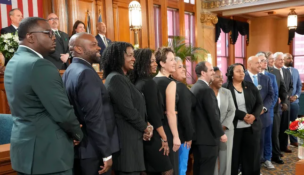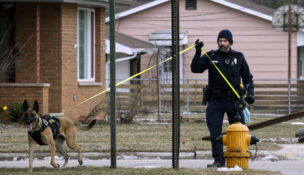Judge Easterbrook issues warning
By: dmc-admin//October 4, 2006//
Attorneys, beware.
 |
| “What would lead counsel to think that the court of appeals will redact his adversary’s brief? The way to point out errors in an appellee’s brief is to file a reply brief, not to ask a judge to serve as editor.”
Hon. Frank H. Easterbrook |
You definitely do not want to file a motion to strike a portion of an opponent’s brief in the Seventh Circuit.
On Sept. 25, rather than issuing a routine denial of such a motion, Judge Frank H. Easterbrook issued an order for publication, in order to put attorneys on notice to stop filing them.
The case involves a trademark dispute between Custom Vehicles, Inc., and Forest River, Inc., in Indiana federal court. Custom Vehicles lost in the trial court and appealed. After Forest River filed its brief, Custom Vehicles filed a motion to strike portions of the appellee’s brief, asserting that certain portions incorrectly stated the record.
The motion was assigned to Easter-brook during his rotation as the court’s motion judge, and he denied the motion. As a sanction, he reduced the length of the appellant’s reply brief by twice the length of the motion.
Easterbrook began, “Perhaps Custom Vehicles is right about the record and Forest River wrong. But what would lead counsel to think that the court of appeals will redact his adversary’s brief? The way to point out errors in an appellee’s brief is to file a reply brief, not to ask a judge to serve as editor. … The judiciary has quite enough to do deciding cases on their merits.”
However, the order does permit counsel to respond if the purportedly material misrepresentation occurs in an appellant’s reply brief (and there is no opportunity to add-ress the misrepresentation in a later brief).
|
What the court held Case: Custom Vehicles, Inc., v. Forest River, Inc., No. 06-2009 Issue: Can a party move to strike a portion of an adversary’s brief on the grounds it misrepresents the record? Holding: No. The way to point out errors in a brief is to file a reply brief, not seek redaction. |
In that case, the order states that the appellee may seek leave to file a supplemental statement.
Easterbrook noted that nothing in the Federal Rules of Appellate Procedure authorizes such a motion, and the Circuit Rules only permit a motion to strike ex-traneous materials.
Easterbrook acknowledged that FRCP 12(f) provides that a district court “may order stricken from any pleading any insufficient defense or any redundant, immaterial, impertinent, or scandalous matter.”
However, Easterbrook observed that the rule does not apply to appellate practice and that Custom Vehicles’ motion does not contend that Forest River’s brief contains any matter that could be characterized as “redundant, immaterial, impertinent, or scandalous.”
Easterbrook also acknowledged that some motions may be proper despite the lack of a specific rule, such as motions to seal briefs containing confidential material, or motions to strike briefs that entirely violate the rules of appellate procedure.
Nevertheless, he continued, “But editing a brief? That’s a different kettle of fish. The sort of motion that Custom Vehicles has filed does nothing but squander time.”
| |
||
|
Related Links |
||
| |
||
The effect of such motions, Easterbrook noted, is to increase the number of judges from three to four who must consider the case.
Turning to the remedy, Easterbrook stated that, in the past, he has treated such motions as a form of “advance” on the allowance of pages or words used for the movant’s brief, and reduced the allowable length of the movant’s brief.
But, he observed, “My practice has not led to a discernible reduction in the number of these motions, however, perhaps because I have not explained it in a published opinion.”
Accordingly, Easterbrook wrote, “Now notice has been given — and I have decided to raise the stakes and deduct from the brief double the number of words in a motion to edit an opponent’s brief or any other equivalently absurd, time-wasting motion.”
Because Custom Vehicles’ motion to strike contains about 1,200 words, and the maximum length of a reply brief is 7,000 words, Easterbrook ordered that the reply brief may not exceed 4,600 words.
Legal News
- Wisconsin Supreme Court justices question how much power Legislature should have
- Milwaukee’s Common Council now has the most African Americans, women and openly LGBTQ members ever
- Office of School Safety Provides Behavioral and Threat Assessment Management Training Ahead of 25th Anniversary of Columbine Shooting
- Wisconsin Supreme Court to hear arguments in Democratic governor’s suit against GOP-led Legislature
- Lawsuit asks Wisconsin Supreme Court to strike down governor’s 400-year veto
- Wisconsin man pleads not guilty to neglect in disappearance of boy
- ACS Selects University of Wisconsin Law School’s Miriam Seifter for 2024 Ruth Bader Ginsburg Scholar Award
- People with disabilities sue in Wisconsin over lack of electronic absentee ballots
- Wisconsin Republicans ignore governor’s call to spend $125M to combat ‘forever chemicals’
- Native American voices are finally factoring into energy projects
- Steven Avery prosecutor Ken Kratz admits ‘mistakes were made’
- Colombian national extradited to Milwaukee faces International narcotics-trafficking conspiracy charge
WLJ People
- Power 30 Personal Injury Attorneys – Russell Nicolet
- Power 30 Personal Injury Attorneys – Benjamin Nicolet
- Power 30 Personal Injury Attorneys – Dustin T. Woehl
- Power 30 Personal Injury Attorneys – Katherine Metzger
- Power 30 Personal Injury Attorneys – Joseph Ryan
- Power 30 Personal Injury Attorneys – James M. Ryan
- Power 30 Personal Injury Attorneys – Dana Wachs
- Power 30 Personal Injury Attorneys – Mark L. Thomsen
- Power 30 Personal Injury Attorneys – Matthew Lein
- Power 30 Personal Injury Attorneys – Jeffrey A. Pitman
- Power 30 Personal Injury Attorneys – William Pemberton
- Power 30 Personal Injury Attorneys – Howard S. Sicula











